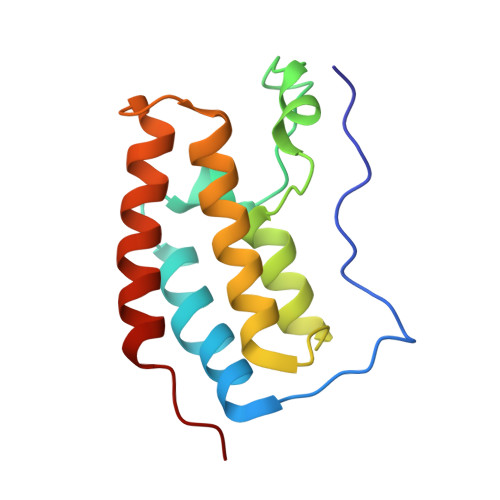Discovery of New Bromodomain Scaffolds by Biosensor Fragment Screening.
Navratilova, I., Aristotelous, T., Picaud, S., Chaikuad, A., Knapp, S., Filappakopoulos, P., Hopkins, A.L.(2016) ACS Med Chem Lett 7: 1213-1218
- PubMed: 27994766
- DOI: https://doi.org/10.1021/acsmedchemlett.6b00154
- Primary Citation of Related Structures:
5LUU, 5LVQ, 5LVR, 5TB6 - PubMed Abstract:
The discovery of novel bromodomain inhibitors by fragment screening is complicated by the presence of dimethyl sulfoxide (DMSO), an acetyl-lysine mimetic, that can compromise the detection of low affinity fragments. We demonstrate surface plasmon resonance as a primary fragment screening approach for the discovery of novel bromodomain scaffolds, by describing a protocol to overcome the DMSO interference issue. We describe the discovery of several novel small molecules scaffolds that inhibit the bromodomains PCAF, BRD4, and CREBBP, representing canonical members of three out of the seven subfamilies of bromodomains. High-resolution crystal structures of the complexes of key fragments binding to BRD4(1), CREBBP, and PCAF were determined to provide binding mode data to aid the development of potent and selective inhibitors of PCAF, CREBBP, and BRD4.
Organizational Affiliation:
Division of Biological Chemistry and Drug Discovery, School of Life Sciences, University of Dundee , Dow Street, Dundee DD1 5EH, United Kingdom.
















